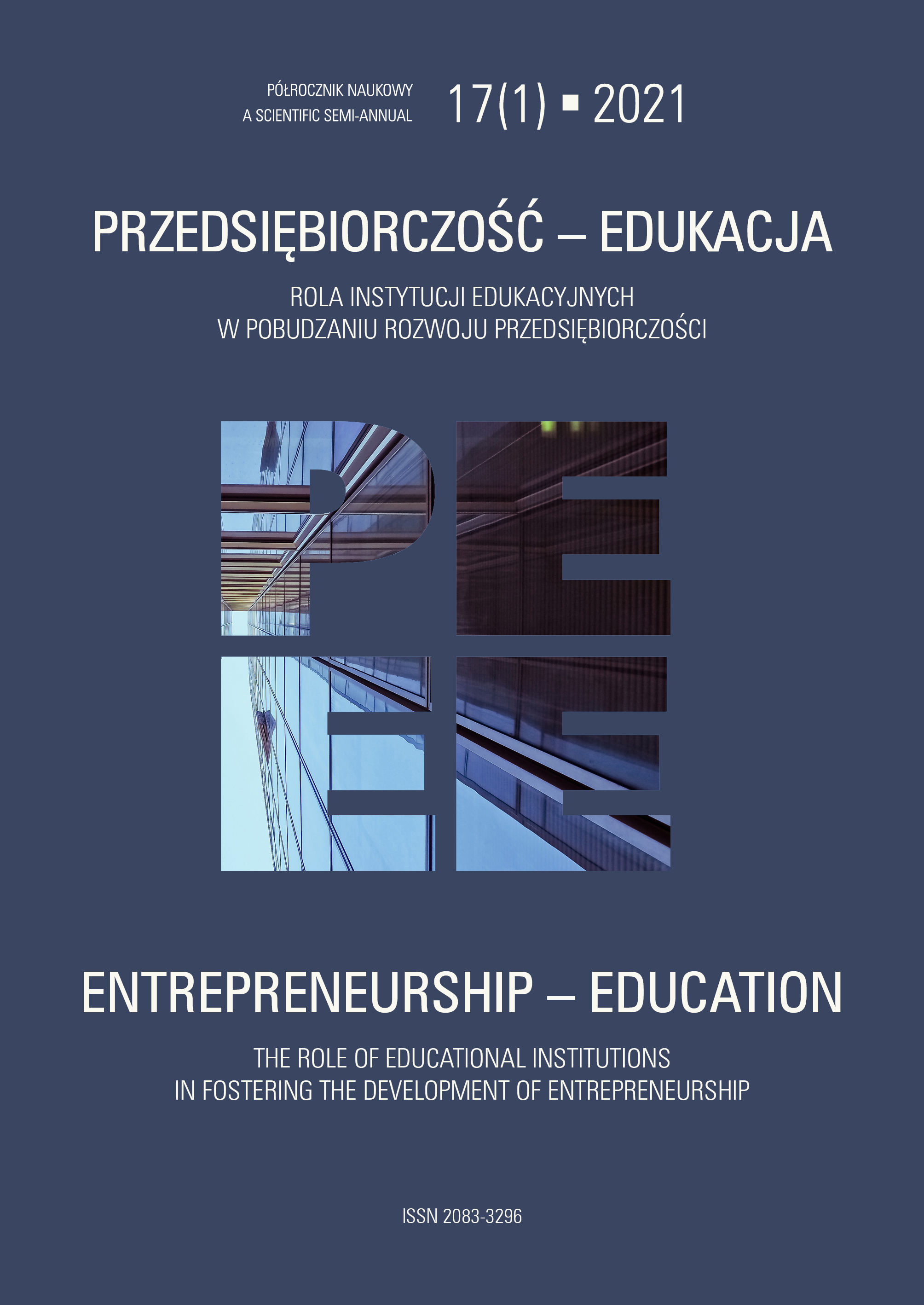New professional competencies in the era of WEB 2.0 and 3.0 and the dissemination of ICT
DOI:
https://doi.org/10.24917/20833296.171.2Słowa kluczowe:
entrepreneurship, internet, personal development, social mediaAbstrakt
The purpose of this article is to identify and describe the new, yet relatively poorly known, competencies related to WEB 2.0 and 3.0 and the dynamically changing organisational environment influenced by the development of ICT. The article’s content can be used (application purpose) to draw attention to the necessity of active searching for new competency areas by trainers and teachers. To achieve this aim, two research tasks were undertaken. The first was a literature review and explanation of the concepts related to the research subject. This theoretical foundation then served as a starting point for an attempt to create a list of professions and related competencies corresponding to the needs of WEB 2.0 and 3.0. The results of this are presented in a tabular form.
Bibliografia
Berek, J. (2016). Identyfikacja pożądanych kompetencji pracowników na przykładzie przedsiębiorstw branży lotniczej regionu bielsko-bialskiego. Zeszyty Naukowe Małopolskiej Wyższej Szkoły Ekonomicznej w Tarnowie, 29(1), 13–25.
Berners-Lee, T. (1998; 2020, 15 November). The World Wide Web: A very short personal history. Retrieved from: http://www.w3.org/People/Berners-Lee/ShortHistory.htm
Boyatzis, R.E. (1982). The Competent Manager: A Model for Effective Performance. New York: John Wiley&Sons.
Collins Dictionary. (2020, 15 November). https://www.collinsdictionary.com
DuBrin, A. (2008). Essentials of Management. Mason. OH: South-Western Cengage Learning.
Filipowicz, G. (2004). Zarządzanie kompetencjami zawodowymi. Warszawa: PWE.
Garavan, T., McGuire, D. (2001). Competences & Workplace Learning: Some Reflections on the Rhetoric & the Reality. Journal of Workplace Learning, 13(4), 144−164.
Karakas, F., (2009). Welcome to World 2.0: New Digital Ecosystem. Journal of Business Strategy, 30(4), 22–30.
Kossowska, M., Sołtysińska, I. (2002). Szkolenia pracowników a rozwój organizacji. Kraków: Oficyna Ekonomiczna.
Kwiatkowski, S.M., Woźniak, I. (2003). Krajowe standardy kwalifikacji zawodowych. Projektowanie i stosowanie. Warszawa: MGiPS.
Woodall, J., Winstanley, D. (1998). Management Development: Strategy & Practice. Oxford: Blackwell.
Kwiatkowski, S.M. (2014). Od kompetencji do zintegrowanego systemu kwalifikacji. Ruch Pedagogiczny, 4, 25–33.
Management Charter Initiative. (1990). Occupational Standards for Managers: Management I and Assessment Guidance, MCI. London.
McClelland, D.C. (1973). Testing for Competence, rather than Intelligence. American Psychologist, 28, 1–14.
Mikuła, B., Pietruszka-Ortyl, A. (2007). Kompetencje pracowników w perspektywie strategicznego zarządzania wiedzą w przedsiębiorstwie. Zeszyty Naukowe AE w Krakowie, 747, 49–73.
Model ewolucji internetu: wersja 0.3. (2010). Retrieved from: http://networkeddigital.com/2010/03/28/model-ewolucji-internetu-wersja-0-3/
NCVQ. (1997). National Council for Vocational Qualifications.
New, G.E. (1996). Reflections: A three-tier model of organizational competences. Journal of Managerial Psychology, 11, 8, 44–51
Nordhaug, O., Gronhaug, K. (1992). Strategy and Competence in Firms. European Performance. NY: Wiley Sons.
O’Reilly, T. (2005; 2020, 15 November). What Is Web 2.0? Retrieved from: http://oreilly.com/web2/archive/what-is-web-20.html
Orlińska-Gondor, A. (2006). Zarządzanie ludźmi oparte na pojęciu kompetencji. In: L. Zbiegień-Maciąg (ed.), Nowe tendencje i wyzwania w zarządzaniu personelem. Kraków: Oficyna Ekonomiczna Grupa Wolters Kulwer, 168–190.
Rostowski, T. (2002). Kompetencje jako jakość zarządzania zasobami ludzkimi. In: A. Sajkiewicz (ed.), Jakość zasobów firmy. Kultura, kompetencje, konkurencyjność. Warszawa: Wydawnictwo POLTEXT.
Rudewicz, J. (2019). Model ekonomii współpracy w koncepcji miast Smart City 3.0. Przedsiębiorczość – Edukacja [Entrepreneurship – Education], 15(2), 153–170.
Schroder, H.M. (1989). Managerial Competences: The key to excellence. The Academy of Management Review, 15(4), 713–715.
Sivarajah, U., Irani, Z., Weerakkody, V. (2015). Evaluating the use and impact of Web 2.0 technologies in local government. Government Information Quarterly, 32, 473–487.
Spencer, L.M., Spencer, S.M. (1993). Competence at Work. Models for Superior. Willey.
Spivack, N. (2011; 2020, 15 November). Web 3.0: The Third Generation Web is Coming. Retrieved from: http://lifeboat.com/ex/web.3.0
Stefaniak, I.M. (2014). Technologia a praca: nowe kompetencje a stare reguły, czyli o wirtualnym świecie, jego możliwościach i wymaganiach. Studia Ekonomiczne, 173–181.
Training Standards Agency. (2000). Definition as in S. Horton Introduction – The Competency Movement: its Origins and Impact on the Public Sector. International Journal of Public Sector Management, 13(4), 7–14.
Pobrania
Opublikowane
Jak cytować
Numer
Dział
Licencja
Artykuły publikowane są zgodnie z warunkami licencji Creative Commons (CC BY-ND 4.0; uznanie autorstwa-bez utworów zależnych).

